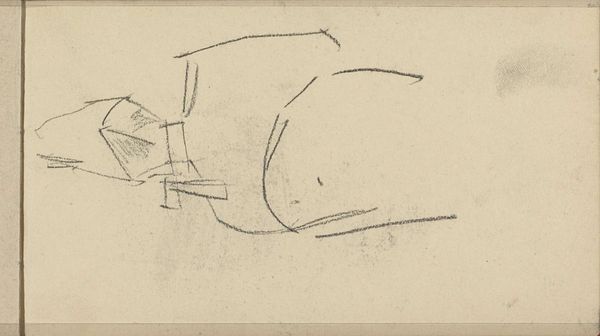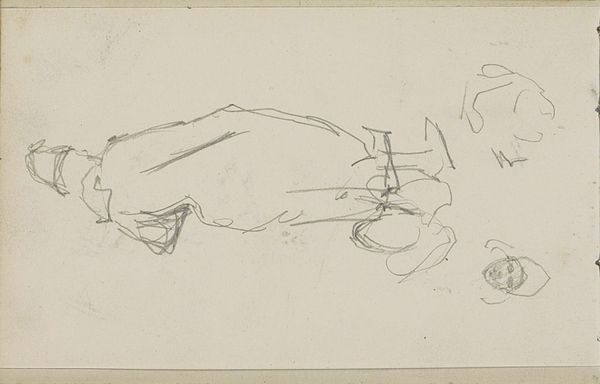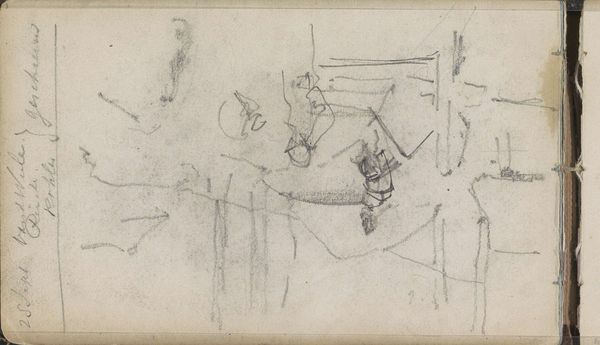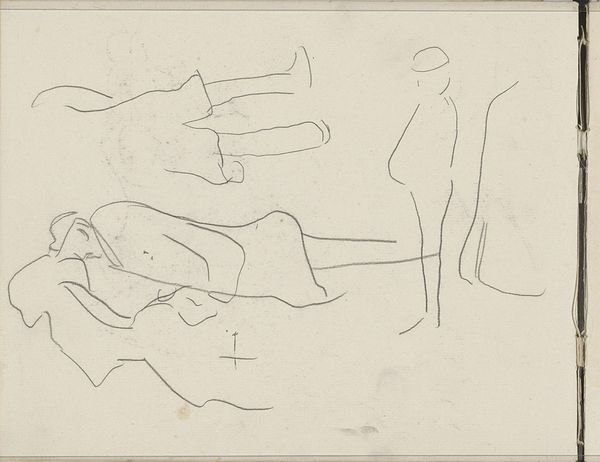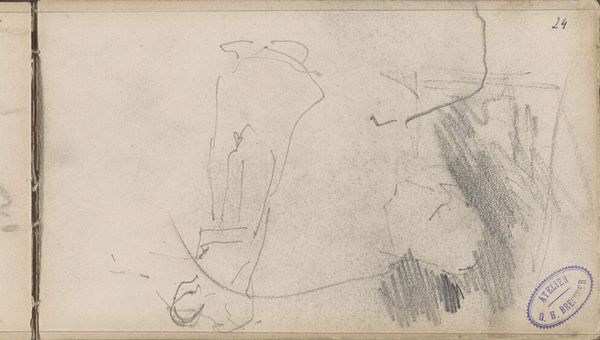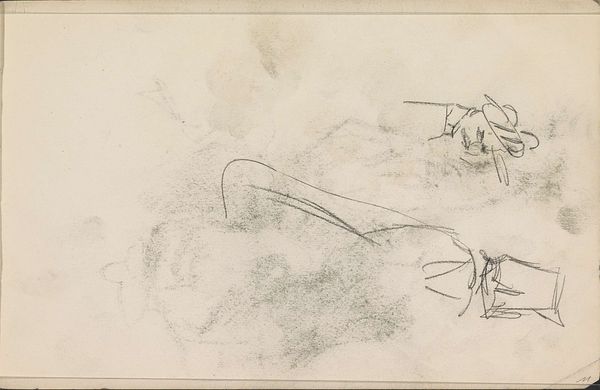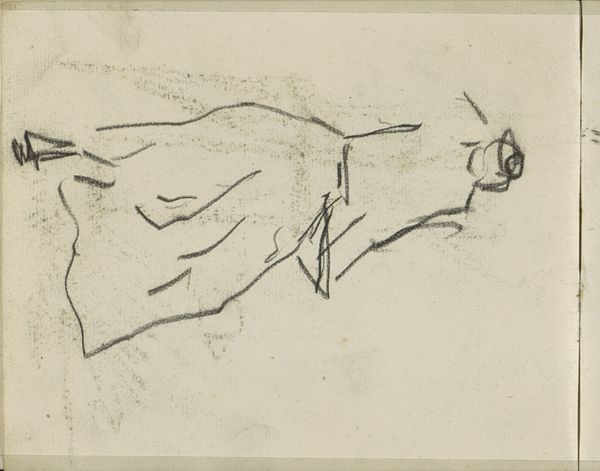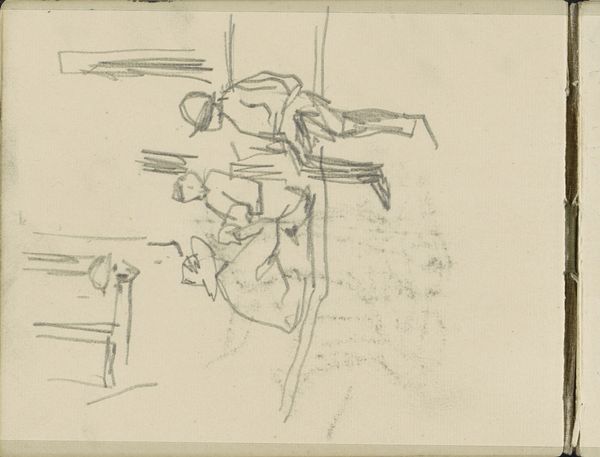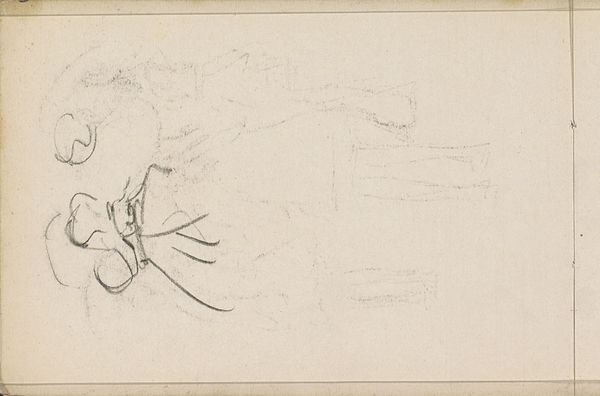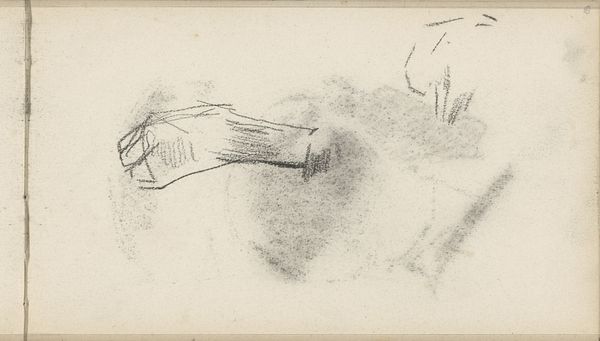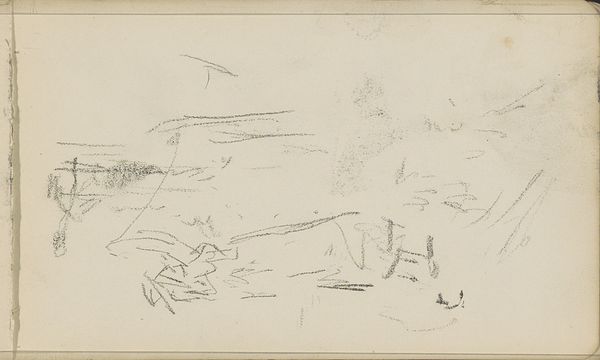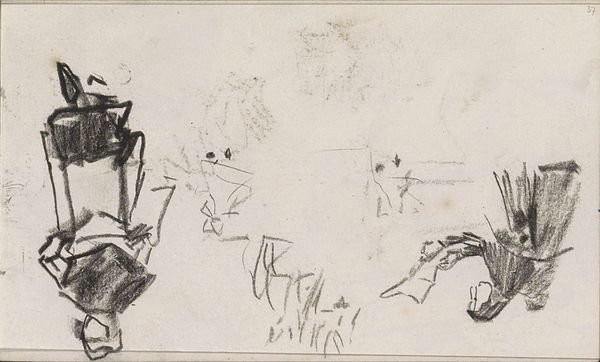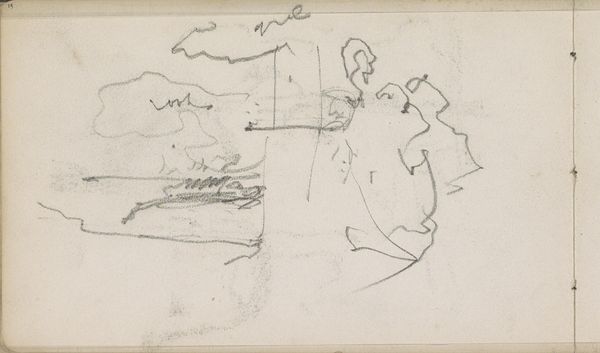
drawing, paper, pencil
#
portrait
#
drawing
#
figuration
#
paper
#
pencil
#
realism
Copyright: Rijks Museum: Open Domain
Curator: What a wonderfully economical drawing, just the bare minimum of marks to suggest form and texture. Editor: Yes, it's intriguing. It feels incredibly fleeting, like a captured moment barely held on paper. Curator: Precisely. We're looking at "Kostuumstudies, mogelijk van een uniform" or "Costume Studies, possibly of a uniform" by George Hendrik Breitner, made between 1881 and 1883. The materials are humble—pencil on paper—but the study gives us insight into the artistic process behind creating official representations. Editor: So it's a behind-the-scenes glimpse at the crafting of image and power, not a finished statement. Does the Rijksmuseum have the final painting? Because I am wondering how this drawing reflects a wider system of influence and patronage. Was this part of a larger commission, perhaps, and who benefitted? Curator: It’s difficult to know. However, it demonstrates the relationship between clothing and social function during this period. Consider how the ready availability of inexpensive materials, like paper and pencils, democratized art education allowing someone like Breitner, at the time still a young artist, to develop these visual ideas, a crucial step to establishing his career. Editor: That’s an interesting take. I think the rapid, gestural quality of the sketch speaks to an almost frantic desire to capture an essence. Also, what do we read into it by considering this as displayed now in the Rijksmuseum? Curator: It highlights the evolution of art’s presentation, doesn’t it? How preliminary works gain status, providing commentary on the social norms around institutional presentation. Editor: I see your point. It really makes you wonder what other hidden studies exist in archives, representing labor beyond the polished product. Curator: Yes. For me, the pencil itself takes centre stage: What sort? How were these marks manufactured, distributed, consumed? The drawing provides a fascinating micro-history. Editor: So, the drawing as an art object and the uniform it studies, both artifacts of their time, both part of the material conditions that supported them, interesting way to look at it. Thanks. Curator: Thank you. A stimulating analysis of materiality and institutional display!
Comments
No comments
Be the first to comment and join the conversation on the ultimate creative platform.
